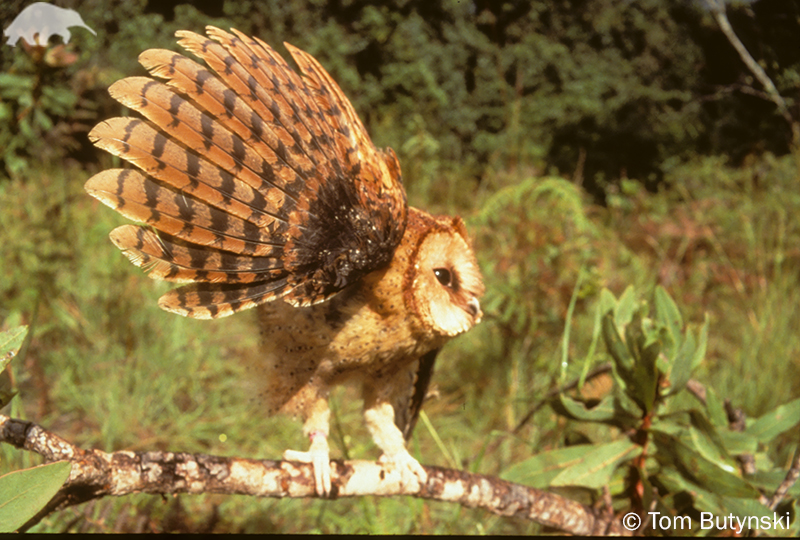About
Only two records of this beautiful owl exist, both of which were of female birds – the male of the species is yet to be described.
The type specimen (the original individual from which this species was described) was found in 1951 in the Itombwe Massif in Democratic Republic of Congo. The most recent sighting occurred in 1996 on the same mountain region, confirming that the species was not extinct. Very little is known about the Congo Bay-owl’s population size, ecology or breeding habits and this needs to be remedied before conservation efforts can begin. The main threat to this species is the clearing of habitat for small-scale agriculture by local farmers in Itombwe, where a maize blight since the early 1990s has reduced yields and forced farmers to clear forest for new farms. The Itombwe Massif itself is threatened by logging, mining, wild fires and forest clearance. A plan has been developed to create core protected areas as well as zones designated for sustainable use and human development.
- Order: Strigiformes
- Family: Tytonidae
- Population: 3,500-15,000
- Trend: decreasing
- Size: 23-29 cm
- Weight: 195g
EDGE Score
Distribution
The Congo Bay-owl is known primarily from the Itombwe Massif in the Democratic Republic of Congo. There are reports that the species may inhabit the Nyungwe Forest in western Rwanda/Burundi (opposite the Itombe Massif). There was a possible sighting in 1974 and a number of cases of similar songs being recorded within the forest.
Habitat and Ecology
Little is known of this species, but it is thought to need a habitat mosaic of grassland, and mountain or bamboo forest.


